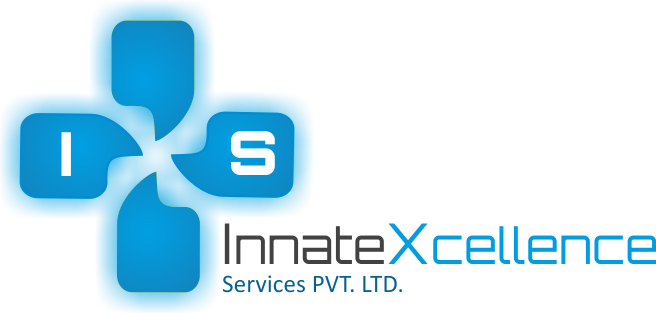Role of QA in our Development Process: Ensuring Flawless Software
Software and technology development has hugely helped today’s world grow mechanically and digitally. Software development has been a major power in our development process, but are you aware that behind this software remains the undeniable role of QA? QA (Quality Assurance) makes the software or system work efficiently.
Quality Assurance is primarily the process of investigating, identifying, and eliminating defects in a particular product or a system, eventually assuring an excellent quality. Before a specific product gets revealed to the market, it undergoes proper testing where the system errors are put to an end, eventually guaranteeing a high-quality product to the customers.
These high-quality products and services are used by ordinary people, which also helps them to develop, and the QA ensures all these. So, what exactly are the roles of QA in this development process, and how does it determine quality? Let’s know it in detail!
Roles of QA in Software Development
If you go through the roles of QA in detail, you’ll understand the system has much to offer. As mentioned before, it sees all the processes by which software works and works on improving it by reducing its drawbacks. Here are the vital roles that quality assurance plays in the developmental process.
- Keeping up with product quality
There’s undoubtedly no doubt that quality assurance is the most crucial phase in the software development process as it works on making the services or products top-notch, which can eventually fulfill the end user’s expectations.
The absence of quality assurance will lead to the generation of faulty products, eventually harming the brand name. Hence, to avoid these troubles, quality assurance solves the testing process by utilizing its bug-tracking programs and test management applications and ensures the excellent quality of the product.
- Highly Security
In the era of hackers, getting security has been a significant challenge, especially in software security. However, the same will not be the case if you have quality assurance in your software development. QA helps identify and fix security problems before hackers get their job done; hence, most companies nowadays make quality assurance a must-need.
- Helps to maintain the brand reputation
The primary motive of any business is customer satisfaction! And the more you keep up with the customers’ expectations, the more excellent your company will be in the limelight. Quality assurance is portrayed as the silent warrior to keep up this reputation. QA will catch any problem found in the product before going to the market.
It troubleshoots any issues it detects, works on sorting it out, and the team regulating the quality assurance process will ensure no problems are seen inside the services. Instead, the customer gets fully satisfied using the product and comes to use it again. By this, the brand reputation gets tightened, and credit goes to QA.
How does QA determine the quality of a product?
QA has a lot of benefits to offer, from maintaining the company’s name and product quality to providing security, etc. But how exactly does the system determine product quality? What does it see in that product? Here are the six quality characteristics that QA sees and verifies before finalizing a product for market launch –
Functionality – Are the functions of that particular software correctly installed? Is the software working right? If not, quality assurance will find the problem.
Usability – QA checks if the product is user-friendly. Is it easy to understand, or does it require extra effort to figure it out like solving a puzzle?
Efficiency – Quality assurance checks if the software is coded correctly. Incorrect or poor coding can make the product inefficient.
Reliability – QA evaluates how reliable the software is. It checks if the application works correctly every time it’s used and assesses its efficiency under specific conditions.
Maintainability – QA considers how easy the software will be to maintain. They inquire whether it’s simple to identify and resolve any issues that may arise in the software.
Portability – QA examines the portability of the software, assessing its adaptability to changes in the environment. Can the system adjust to varying conditions?
Roles in the Quality Assurance Team
Usually quality assurance needs several capable and skilled individuals in a variety of positions to handle the system and keep on the quality assurance work. Here are the roles listed below –
- QA Manager
As you can understand by the second work of the designation, the QA manager primarily manages the work in the QA team, which includes preparing the test strategies, assigning tasks to the respective members of the team, etc. The QA manager acts as the middleman between his team and the development team members, guiding them on how the work should be done, helping them get done on time, and achieving goals.
- QA Lead
The QA Lead is responsible for supervising the QA team. He works closely with his team members, coordinates with his team, creates a plan for a test that will be executed, and makes sure that the QA analyst gets properly documented.
- QA Analyst
The primary role of a QA Analyst in the Quality Assurance Team is to test the software components present within the application. A QA Analyst is generally seen engaging with the product owner and comes up with the tested product, verifies whether the product can be launched into the market or not and defines how far the product will be successful if launched, and determines the quality of that product.
Hence, coming through the quality assurance test is not an easy task! A lot of testing is done on a product to see if it is fully efficient and whether it can satisfy the customers’ needs. And since customer satisfaction is the ultimate goal of companies, they avail the QA system. A product clearing the QA system is indeed worth it for the users.
Final Thoughts
So, as you can understand, when it comes to ensuring the proper quality of software so that it meets the users’ expectations, standards, and requirements, accompanying quality assurance is a must. QA makes the final products’ quality top grade and ensures its decent functionality, reliability, maintainability, efficiency, usability, and portability. The quality assurance team members work in this whole strict process of the development process of software, ensuring that it becomes flawless.



